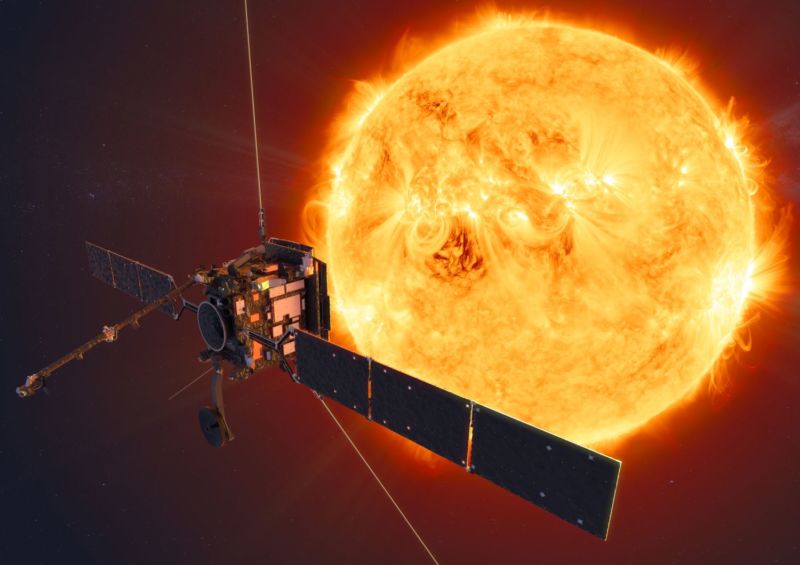
Enlarge / ESA's Solar Orbiter mission will face the Sun from within the orbit of Mercury at its closest approach. (credit: ESA/ATG medialab)
Just before midnight on Sunday, a spacecraft will depart from Cape Canaveral, Florida, on a mission to the sun. Known as Solar Orbiter, this spacecraft will spend the next seven years dipping in and out of the extremely inhospitable environment around the sun. In the process, it will provide us with our first glimpse of the sun’s poles, which will be critical to understanding its topsy-turvy magnetic field. It will also help uncover the origin of violent solar storms that send plasma hurtling toward Earth, where it can knock out satellites and disrupt our power grids.
The Solar Orbiter mission is spearheaded by the European Space Agency and has been almost two decades in the making. It complements NASA’s Parker Solar Probe, launched in 2018, which will pass closer to the sun than any spacecraft in history. Only a year into its mission, Parker is providing scientists with four times more data about the solar environment than expected, says Nour Raouafi, a heliophysicist at Johns Hopkins University Applied Physics Laboratory and Parker project scientist. “We are venturing into regions of space that we never explored before,” says Raouafi. “Every observation is a potential discovery.”
No comments:
Post a Comment